
La Paz, officially known as Nuestra Señora de La Paz, is the de facto capital of Bolivia and is the seat of government of the Plurinational State of Bolivia. With an estimated 816,044 residents as of 2020, La Paz is the third-most populous city in Bolivia. Its metropolitan area, which is formed by La Paz, El Alto, Achocalla, Viacha, and Mecapaca makes up the second most populous urban area in Bolivia, with a population of 2.2 million, after Santa Cruz de la Sierra with a population of 2.3 million. It is also the capital of the La Paz Department.

Oruro or Uru Uru is a city in Bolivia with a population of 264,683, about halfway between La Paz and Sucre in the Altiplano, approximately 3,709 meters (12,169 ft) above sea level.
Banco Bradesco S.A. is a Brazilian financial services company headquartered in Osasco, in the state of São Paulo, Brazil. It is the third largest banking institution in Brazil, as well as the third largest in Latin America, and the seventy-ninth largest bank in the world. It is also one of fifty most valuable banks in the world. The bank is listed at the B3 in São Paulo, where it is part of the Índice Bovespa, in the New York Stock Exchange and in the Madrid Stock Exchange.
Grupo Financiero Banamex S.A. de C.V. has its origins and is the owner of the Banco Nacional de México or Citibanamex. It is the second-largest bank in Mexico. The Banamex Financial Group was purchased by Citigroup in August 2001 for $12.5 billion USD. It continues to operate as a Citigroup subsidiary.

Banco Español de Crédito, S.A., “Spanish Credit Bank”) better known as Banesto, was a Spanish multinational financial services company. Prior to the Spanish Government's historical intervention in 1993, the very first in the history of banking, Banesto was the third-largest financial group in Spain, operating around 1,770 branches, as well as the fifth-largest company of the IBEX 35. The ambitious capital increase planned in 1993 by its Executive Chairman Mario Conde together with J.P. Morgan became the biggest restructuring plan in the history of Europe, involving asset sales and a rights issue of US$1.2 billion, after which Banesto was expected to become the largest financial firm in Europe. Although initially accepted by the Bank of Spain, it was later frustrated following intervention on the basis of financial transparency.

Banco Santander, S.A., doing business as Santander Group, is a Spanish multinational financial services company based in Madrid and Santander in Spain. Additionally, Santander maintains a presence in all global financial centres as the 19th-largest banking institution in the world. Although known for its European banking operations, it has extended operations across North and South America, and more recently in continental Asia. It is considered a systemically important bank by the Financial Stability Board.
HSBC Bank Argentina S.A. is the principal HSBC operating company in Argentina. The seventh-largest bank in the country, it provides a full range of banking and financial products and services, including commercial, consumer and corporate banking, to over 1.2 million customers. In October 2016, HSBC reached an agreement to sell its retail banking operations in Argentina to Banco Santander Río.
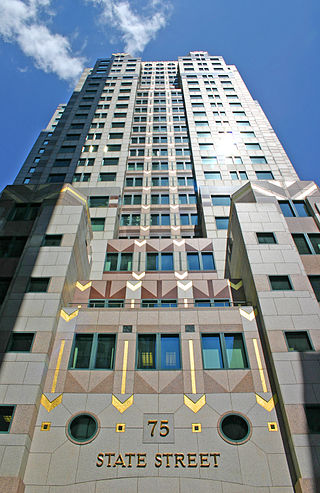
Santander Bank, N. A., is an American bank operating as a wholly-owned subsidiary of the Spanish Santander Group. It is based in Boston and its principal market is the northeastern United States. It has $57.5 billion in deposits, operates about 650 retail banking offices and over 2,000 ATMs, and employs approximately 9,800 people. It offers an array of financial services and products, including retail banking, mortgages, corporate banking, cash management, credit card, capital markets, trust and wealth management, and insurance.

José Manuel Gutiérrez Guerra, known as "the last Oligarch," was a Bolivian economist and statesman who served as the 28th president of Bolivia from 1917 to 1920. He was the grandson of Pedro José Domingo de Guerra, acting president in 1879 and chief justice of the Supreme Court, who had died in office after he was forced to assume presidential responsibilities during the disastrous War of the Pacific.
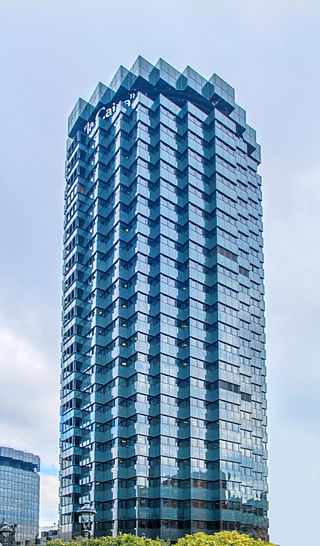
CaixaBank, S.A., formerly Criteria CaixaCorp, is a Spanish multinational financial services company. CaixaBank is based in Valencia, with operative offices in Madrid and Barcelona, Spain. It is Spain's third-largest lender by market value, after Banco Santander and BBVA. CaixaBank has 5,397 branches to serve its 15.8 million customers, and has the most extensive branch network in the Spanish market. It is listed in the Bolsa de Madrid and is part of the IBEX 35.

Banco de Venezuela is an international universal bank based in Caracas. It was the market leader in Venezuela until 2007, when it fell to third place, with an 11.3% market share for deposits; its major competitors are Banesco, Banco Mercantil and BBVA Banco Provincial. As of June 2008, it had 285 branches in Venezuela.
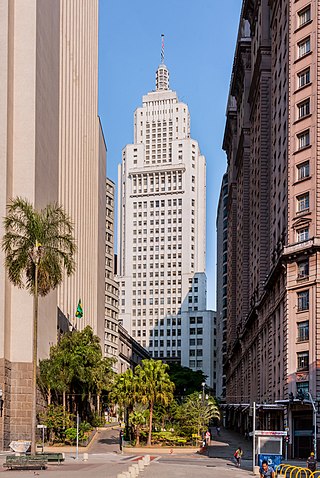
Banco Santander (Brasil) S.A. is the Brazilian subsidiary of the Spanish Santander Group, headquartered in São Paulo, Brazil. It is the fifth largest banking institution in Brazil, as well as the fifth largest in Latin America, and the largest division of the group outside Europe, accounting for around 30% of its financial results globally by 2019. The bank is listed at the B3 in São Paulo, and at NYSE though ADRs.

Banco Santander Argentina is a commercial bank and financial services company and affiliate of the Santander, Cantabria (Spain) based Santander Group. Based in Buenos Aires, its banking operations are the third largest in Argentina, as well as the largest among all privately owned banks in the country.

Alfredo Sáenz Abad is a Spanish businessman who was the CEO and Vice-Chairman of the Spanish bank Santander Group, the largest bank in the Eurozone and one of the largest banks in the world in terms of market capitalisation. He obtained his degree in Law from the University of Valladolid, and in Economics from the Universidad de Deusto, Bilbao.
Banco de Crédito de Bolivia is a banking and financial services company located in Bolivia. It is headquartered in La Paz and is a wholly owned international subsidiary of Banco de Crédito del Perú, Peru's largest bank. BCP Bolivia started its operations in the country following BCP's acquisition of the Bolivian bank Banco Popular. BCP Bolivia provides its products and services through operating 102 branches, 240 ATMs, call centers, and online and mobile banking platforms. Banco de Crédito de Bolivia is currently Bolivia's fourth largest bank by total assets.
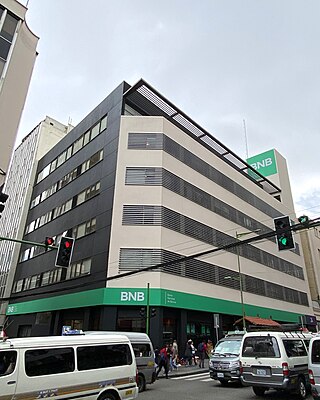
Banco Nacional de BoliviaS.A. (BNB) (English: National Bank of Bolivia) is a Bolivian bank and financial institution headquartered in Sucre, Bolivia. Founded in 1871, it is one of Bolivia's oldest banks. It is also the country's second largest bank by total assets.

Banco BISA S.A., formerly known as Banco Industrial S.A. is a Bolivian banking and financial services company headquartered in La Paz. Founded on 5 July 1963, Banco BISA became Bolivia's third largest bank by assets. The bank provides its products and services through operating 66 banking centers, 280 ATMs, call centers, and online and mobile banking platforms.
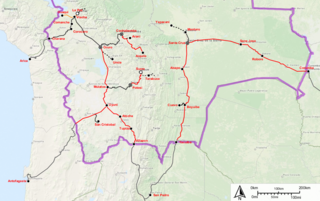
The history of rail transport in Bolivia began in the 1870s after almost three decades of failed efforts to build railroads to integrate the country, mining was the driving force for the construction of railways. The need to transport saltpeter to the coast triggered the first railway lines in Bolivia. It was the silver mining, however, that drove the construction of a railway from the Pacific coast to the high plateau during the nineteenth century. Later, at the beginning of the twentieth century, tin mining gave a new impetus to railway building, forming what is now known as the Andean or Western network. The eastern network, on the other hand, developed between the years 1940 and 1960 and is financed in exchange for oil through agreements with Argentina and Brazil. Bolivia being a landlocked country, the railways played a fundamental role and the history of its railroads is the history of the country's efforts to reach first ports on the Pacific coast and then the Atlantic.















